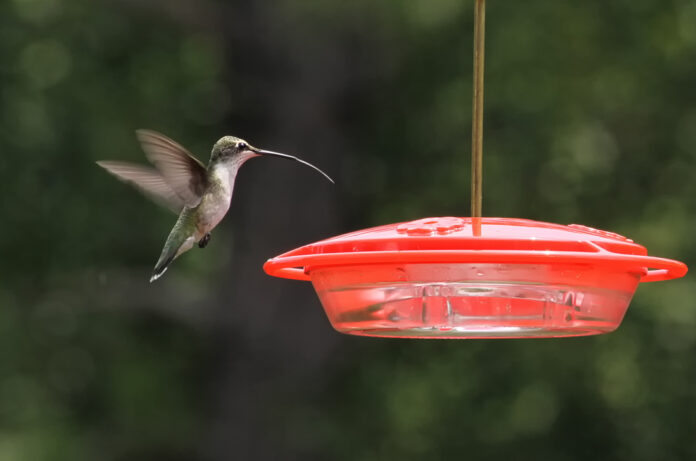There are hundreds of species of hummingbirds and approximately fifteen species come to the US. However, those of us east of the Mississippi river, only get to see the ruby-throated hummingbird during nesting and the raising of young. The ruby-throated is one of the smallest of the North American hummingbirds measuring a scant three to three and three quarter inches in length from tip of tail to tip of beak. They weigh about one tenth of an ounce. Wingspan is a little over four inches.
They migrate each year from Central America to the US and in fall, back to the Yucatan Peninsula, some flying nearly 600 miles nonstop across the Gulf of Mexico. I was on the coast of Texas a few years ago during the time when hummers were coming back to the US for the spring and summer. There had been a land breeze for several days making it difficult for the hummers to get to land. We literally would pick them up off the ground and place them in shrubs. They were totally exhausted. It was said that over half of those migrating at that time perished due to the strong winds.
Do you know that hummingbirds do not suck the nectar through their beaks ? They don’t, they lap it up with their tongues just as dogs and other animals do. The tongue is roughly two and a half times longer than the beak so where is that tongue stored when not being used? It is stored by being wrapped around the little birds brain. Hummers are amazing creatures. They can fly like a helicopter, both in flying backwards and hovering.
If you feed hummers sugar water the recipe is four parts water to one part sugar. Natural nectar has no color so red food coloring is NOT needed. Nearly all feeders have red on them and that is sufficient to attract them.
We are always happy to answer your birding questions at Wild Birds Unlimited on Forest Drive. 782-5700.
Jim Kelly
Sign in
Welcome! Log into your account
Forgot your password? Get help
Password recovery
Recover your password
A password will be e-mailed to you.





